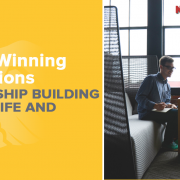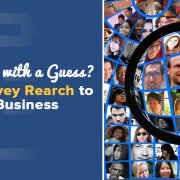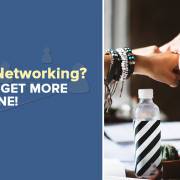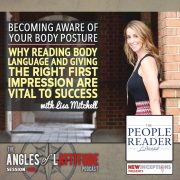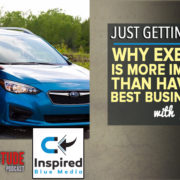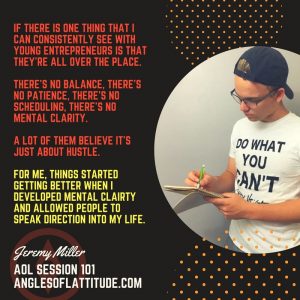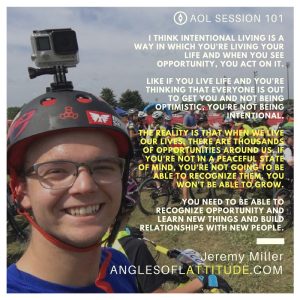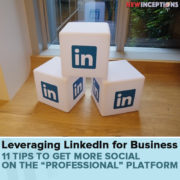As the Junto is starting to grow, I realize that there’s going to be more and more opportunities for people to connect with others who are seemingly going the same direction as they are.
To make sure they are, here’s a few notes from a recent John Maxwell course called the Mentor’s Guide to Relationships. I hope you can use the information presented here to make sure that a pursuing a certain relationship is worth your time.
At the very least, I want to help you realize if you’re in a one way relationship. One that you might be putting way too much energy in yourself and not getting anything back from it.
So let’s start off by looking at the four different levels of relationships.
Four Levels of Relationships
Surface Relationships
Now, when you’re on social media (or anywhere else for that matter) and you’re just meeting someone – you’re engaging in the most basic and common form of a relationship. A surface relationship is one where there’s really no strong commitment from either person and it’s a very passive interaction.
An example of a surface level relationship is just randomly adding a “friend” on Facebook and they in turn accepting that request. You might have just added them to your friends list because they have a lot of mutual friends – even though you don’t really know who they are.
Acquaintances would be part of this this level.
Just remember, all real friends start off as strangers at one point. So, just give it some time if you want things to grow…
Structured Relationships
The next level of a relationship is what’s called the structured relationship. These relationships are with people who meet at certain times. This can mean daily, weekly, or monthly.
Generally speaking this type of routine based engagement is centered around some sort of interest or activity such as an Meetup. In the online business world, it might mean a mastermind group. Or in the typical offline world, it can mean a group of students.
Outside of that group, there’s not much meaning for those people to interact – so they don’t.
Secure Relationships
The next level of relationships are those that when members of a structured relationships start appreciating the bond.
At this level, trust begins to form as the need to spend more time together grows. Most of the time, these folks will have no problems sharing with each other. And there’s a bit of a comfort zone feeling with these folks.
When you were going to school, these were the study friends. Perhaps they were the friends that you hung out with before games. Or maybe they were your fellow band friends who you’d play euchre with each day. But the main thing was that these folks started relying on you as you relied on them.
In business, this might be someone that you decide to joint venture with on a particular project such as a course or new podcast.
Solid Relationships
Next up, we have the highest of all relationships – the solid relationship. At this level, not only do full trust and confidentiality exist, but there is a need to give back to the other party if they’ve helped you in some way.
Of course, this is the basis for a long term relationship.
If we were to think of the school analogy, your close friends were (or are still) examples of this! While, in the business world, you’d start new businesses with these folks.
Avoid High Maintenance Relationships
When I first started dating Maria I had a very strong feeling of “normality” when we were together. She felt like someone that I had known for a long time.
Society suggests – especially TV – that a normal romantic relationship is something that has a lot of maintenance to it. Drama and fighting is to be expected – not calmly discussing the issues at hand.
The truth is that this shouldn’t be the case in ANY relationship you want to make long term – including romantic relationships!
So how do you know if you’re in a high maintenance relationship?
In his book, High Maintenance Relationships, author Les Parrott talks about 12 different types of people who it would be hard to get along with – especially over a significant amount of time.
- Critic – constantly complains and gives unwanted advice.
- Martyr – forever the victim and wracked with self-pity.
- Wet Blanket – pessimistic and automatically negative.
- Steam Roller – blindly insensitive to others.
- Gossip – spreads rumors and leaks secrets.
- Control Freak – unable to let go and let be.
- Backstabber – irrepressibly two-faced.
- Cold Shoulder – disengages and avoids contact.
- Green Eyed Monster – seethes with envy.
- Volcano – builds steam and is ready to erupt.
- Sponge – constantly in need but gives nothing back.
- Competitor – keeps track of tit for tat.
Are you with one of these types of individuals? If so, you might want to move on.
If you wouldn’t be in romantic relationships with someone with one or several of these particular traits, why would you want to be in business with them… or visa versa?
Going from Surface to Solid Relationships
In the past week, I’ve relearned how awkward people can be when it comes to developing real relationships. Whether it’s simple friendships, jv partnerships, or going after a life partner… the goal is to not be a weirdo.
Believe me, I learnt the hard way!
So how do you go from adding a friend on Facebook to making them a good friend, business partner, or building something that could be even more?
Here’s 5 traits of a solid relationship.
Mutual Enjoyment
Here’s the truth. Spend time with people who enjoy your presence. If you feel that you’re having to pry and overly try with the relationship, it’s probably not a good foundation and you should move on.
Don’t be an irritant!
Respect
What’s the best way to make sure you’re not an irritant?
Be respectful of the other person.
Forget the golden rule of treating people how you’d want to be treated. Instead, treat people like they would like to be treated.
What’s that mean?
Learn how they want to be interpreted. Find out their story. Be curious and let them be the storyteller. Find out where they went to school and for what. If they didn’t go to school, find out what they’ve learned “the hard way”.
If you’re unclear as to how to read a certain topic with them – don’t feel like you have to assume something – this usually works out negatively if you do. No question is dumb. Just say “I’m not sure how to ask this but…” if you’re completely unsure how to ask something.
Have a problem with them? Let them know. Likewise, if they feel like they have a problem with you, they should come to you about it.
Make a point to get to know someone, but not for manipulative purposes. If they tell you something that’s a secret, don’t tell anyone. If they are hesitant in a certain area, learn how to help bring out the best in them through their own permission.
Mutual Shared Experiences
There’s a reason why military veterans get along as well as they do even if they didn’t know each other prior to them first getting together.
What’s the reason?
They have shared similar experiences.
From day 1, they’re taught to trust each other to be part of a larger organism. When you count on someone to do a certain action which allows you to do your job, then you’re going to care about that other person more. Cause if they get taken out, then you won’t be able to do what you need to do properly.
Sports players are the same way.
When talking about developing a winning football team, Vince Lombardi said, “The difference between mediocrity and greatness is the feeling these guys have for each other.”
It makes sense. If the line doesn’t do their job and block, then the ball handlers can’t do their jobs. The result is that the ball doesn’t go anywhere.
Reciprocity
For the above teams to win, that caring feeling needs to be mutual between teammates – whether on a battlefield with bullets… or on the gridiron.
Right here is how you can tell if a relationship is worth your time to develop. If you feel like everything is running smoothly, then everything is fine.
However, if you feel that the other person is getting a better deal, bring it up with them. If they don’t acknowledge it, then it might be time to move onto another relationship.
If you feel like you’re getting a better deal, then it’s your job to make sure that they’re being evenly compensated.
Trust
Trust comes over time and is the result of the previous 4 traits humming along just fine. Don’t forget that intentions don’t really matter when it comes to other people.
It’s all about actions.
When your actions match your words, that’s how you build trust.
Just make sure that those actions are positive and truly helpful to the other party!
Action Steps
As you might have realize, relationships are something that I take seriously. There was a time when I wasn’t super great at them – so I made it a point to go out of my way to learn about them. If you want to learn more about building great relationships, I’d check out the book by John Maxwell and Les Parrott 25 Ways to Win with People: How to Make Others Feel Like a Million Bucks
As you probably know, I’m a big fan of John’s and he has ton’s on this topic!


